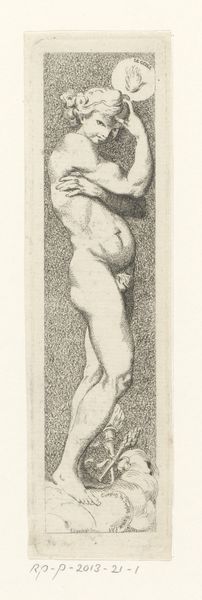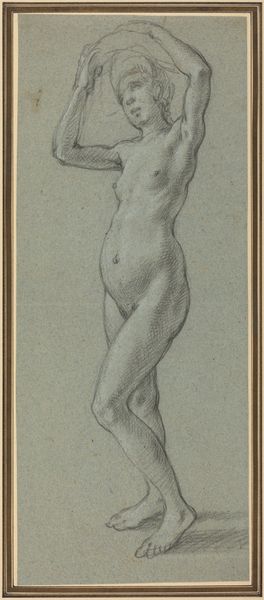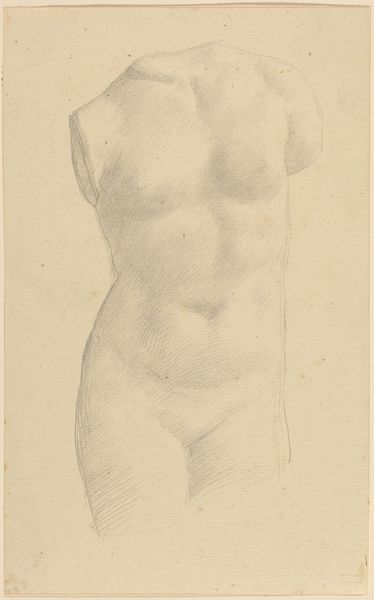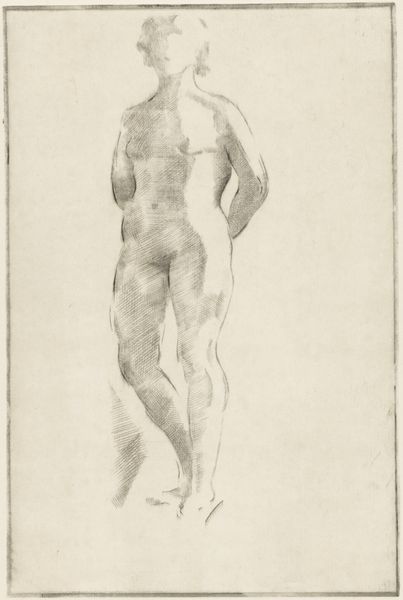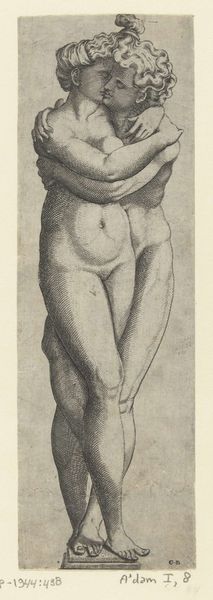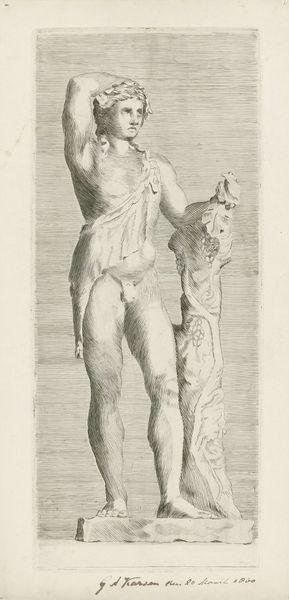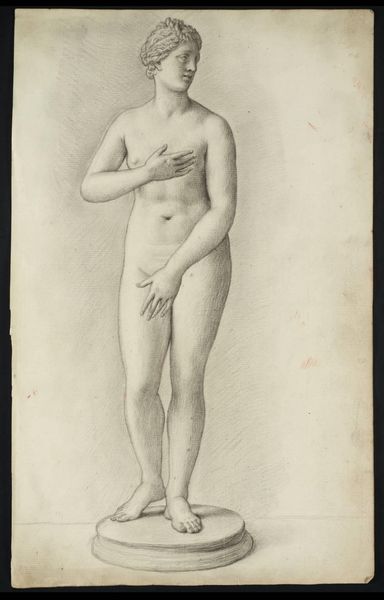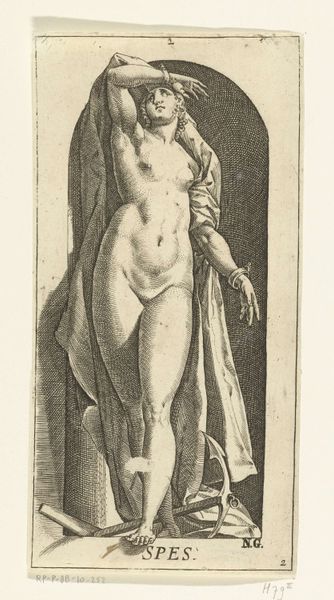
drawing, pencil, engraving
#
drawing
#
charcoal drawing
#
figuration
#
11_renaissance
#
female-nude
#
pencil drawing
#
pencil
#
line
#
watercolour illustration
#
northern-renaissance
#
charcoal
#
italian-renaissance
#
nude
#
engraving
Dimensions: 12 13/16 x 4 11/16 in. (32.5 x 11.9 cm)
Copyright: Public Domain
Curator: Let's discuss Albrecht Dürer's engraving "Fortuna in a Niche," created in 1498. Editor: The first thing I notice is the quality of the lines—precise, yet incredibly delicate. There is a curious tension to the scene as a whole, almost as if she's trapped in the very niche that's meant to present her. Curator: Dürer was exceptionally skilled with printmaking techniques. Consider the controlled hatching, and cross-hatching, all achieved with an engraver’s burin. Each line is deliberate. These lines not only shape form but communicate texture and the reflective properties of light across surfaces. Also, note the watermark; it connects to the commercial production and distribution of prints at this time. Editor: Absolutely. The image presents the goddess Fortuna standing on a sphere, suggesting the instability and fickle nature of fortune. Blindfolded, she can't see where she's going, highlighting the capricious nature of fate. Her pose, the contrapposto, almost parodies the Renaissance ideal, while subtly implying imbalance. What would someone in the late fifteenth century think of a "statue" of Fortuna that lacked permanence? Curator: These prints were more accessible to a wider audience than paintings; a rapidly growing urban population seeking images that combined classical references with Christian morality would have seen it differently from wealthy elites who enjoyed individualized art consumption patterns. Dürer could distribute images faster than painters ever could. The printing press itself mirrors the volatile nature of chance! Editor: That's a great connection! By depicting Fortuna this way, Dürer visualizes complex philosophical concepts for those new viewers you mention. Her nudity represents vulnerability and openness, a revelation of truth beneath the superficial mask of circumstance, but her serene expression betrays a complex narrative where the chaos is perhaps more controllable than people understand. The cultural context becomes incredibly layered and intricate. Curator: Indeed, examining the social factors through production offers critical interpretations. The role of printmakers, publishers, merchants… these layers of labour contribute to how images gain meaning. Editor: What resonates most with me is the enduring human quest to find some semblance of control amid chaos, something that transcends Dürer's moment and speaks to ours as well. Curator: Analyzing the production behind it deepens the meaning even further, enhancing the way we consider cultural objects within their historical and societal contexts.
Comments
No comments
Be the first to comment and join the conversation on the ultimate creative platform.
